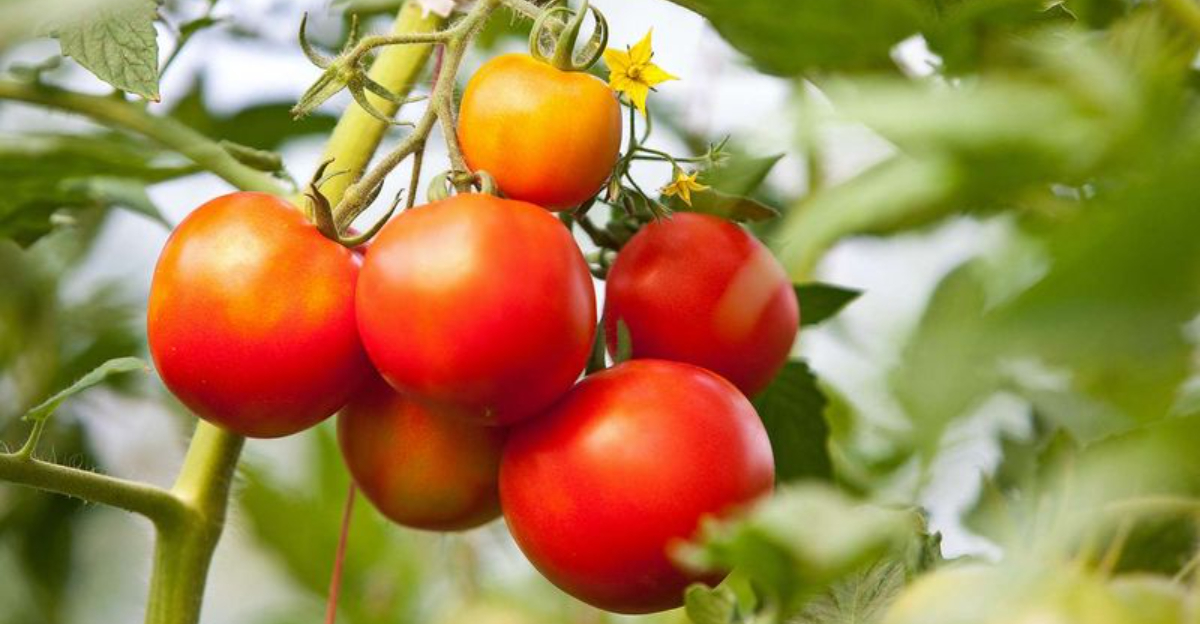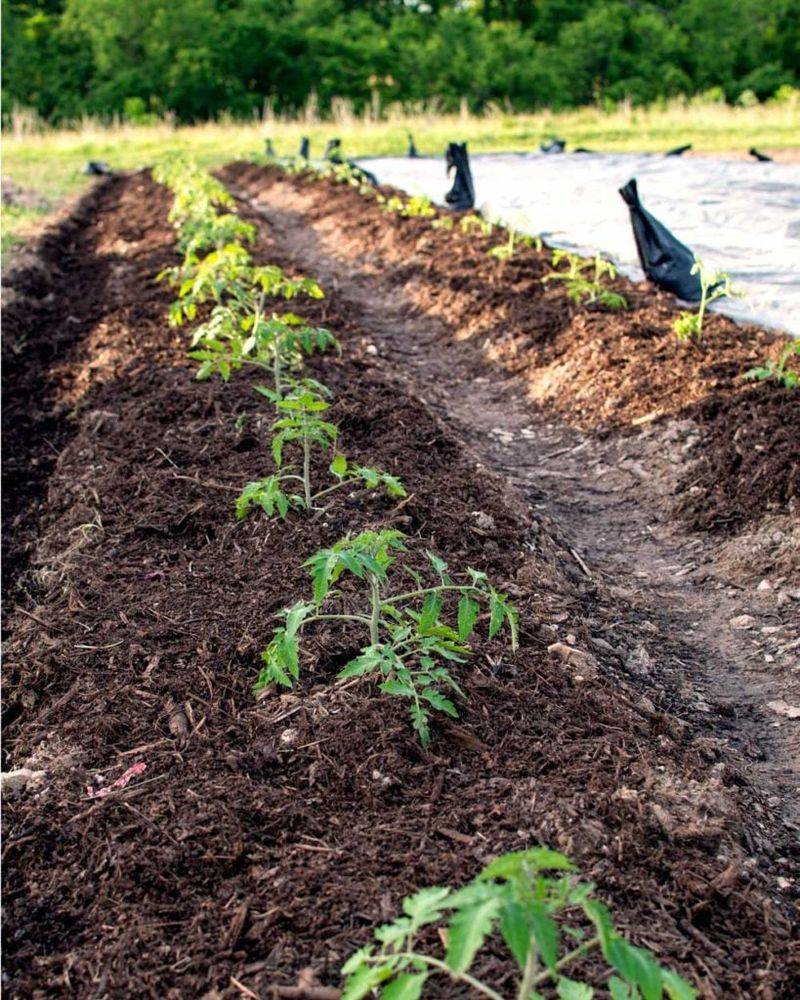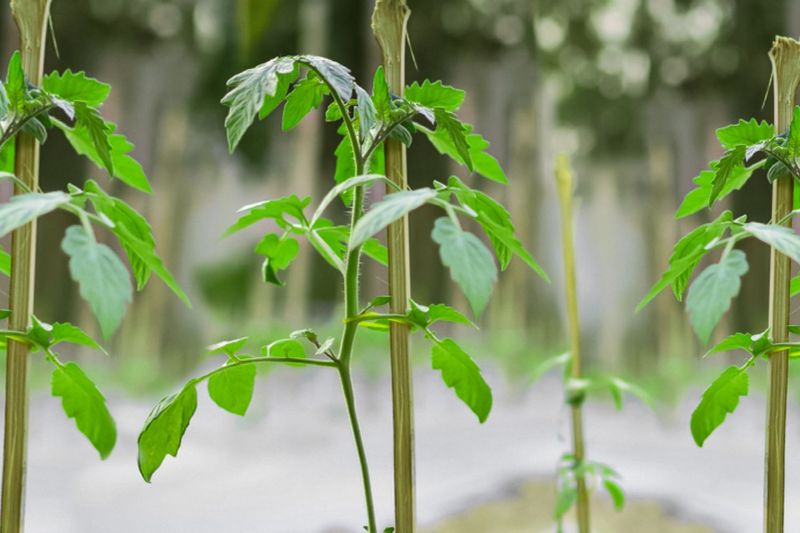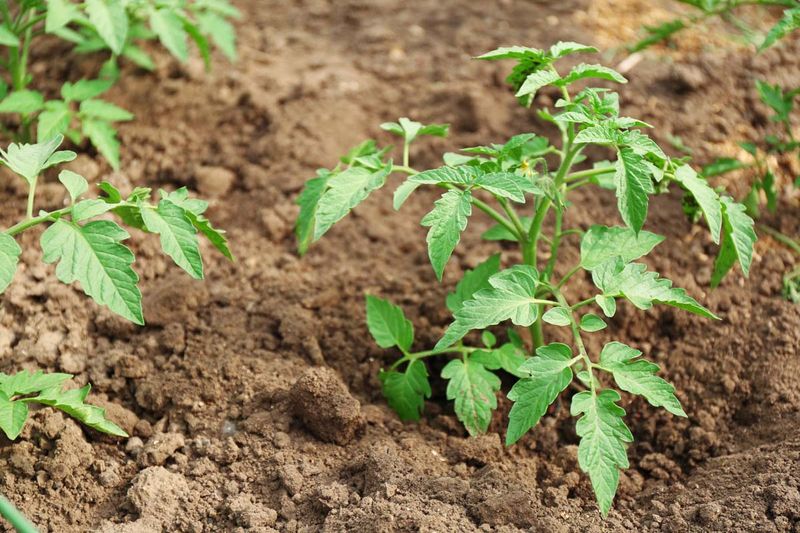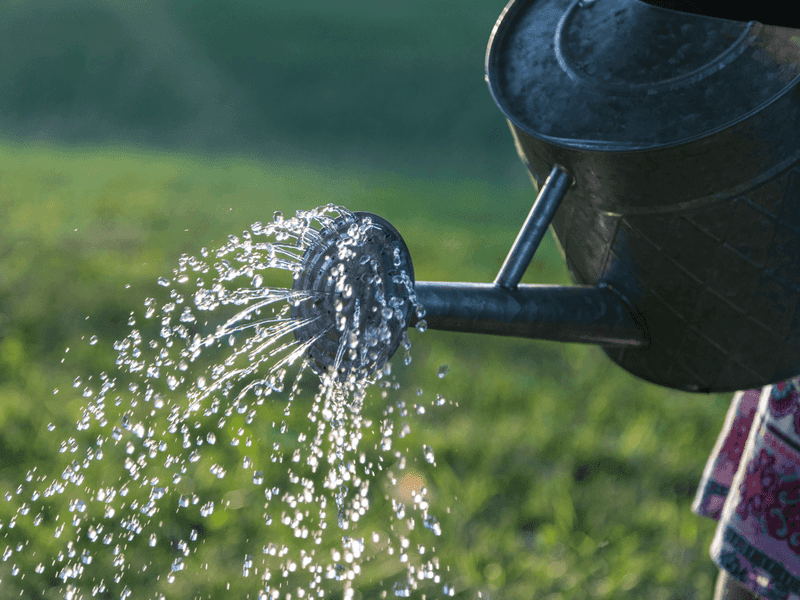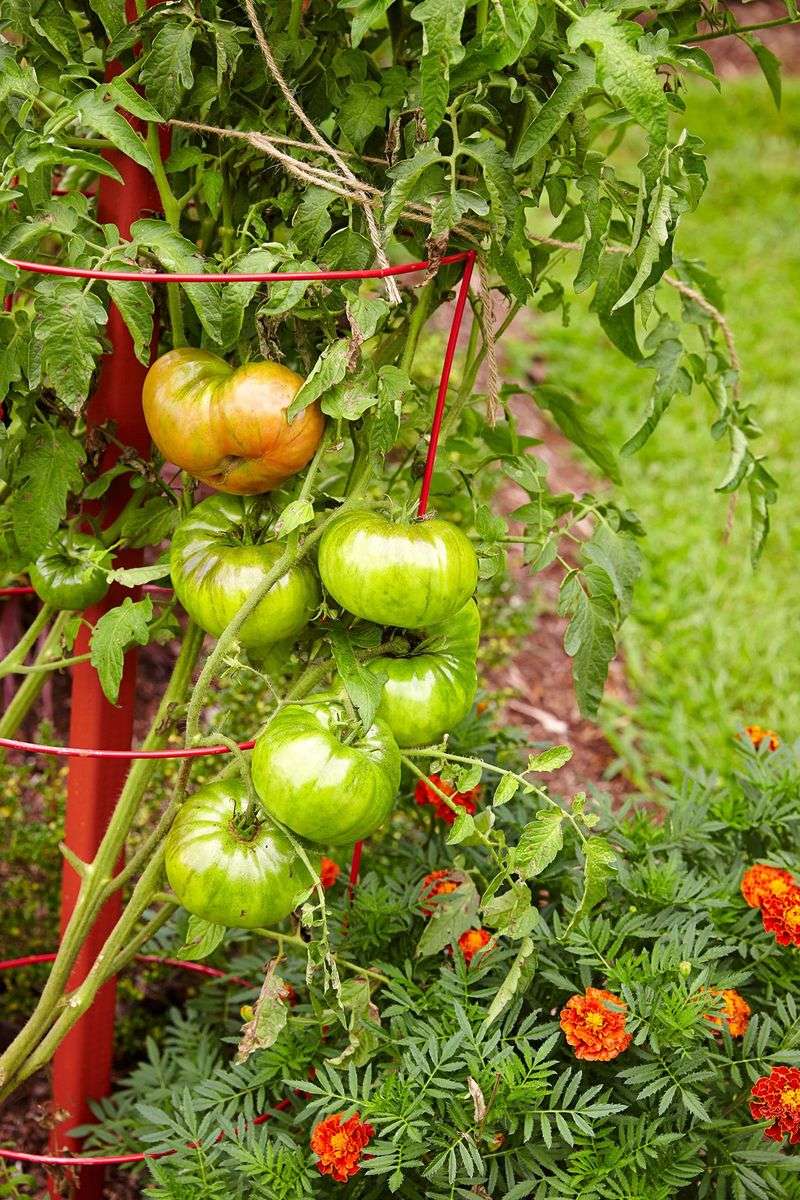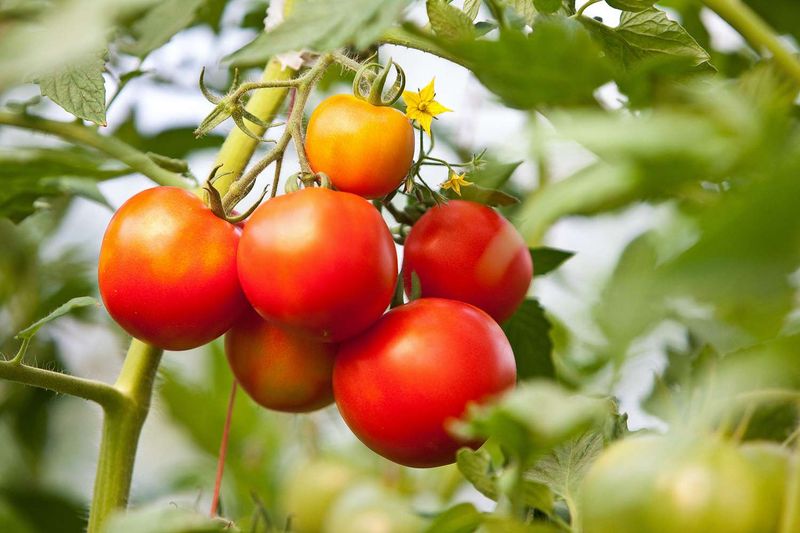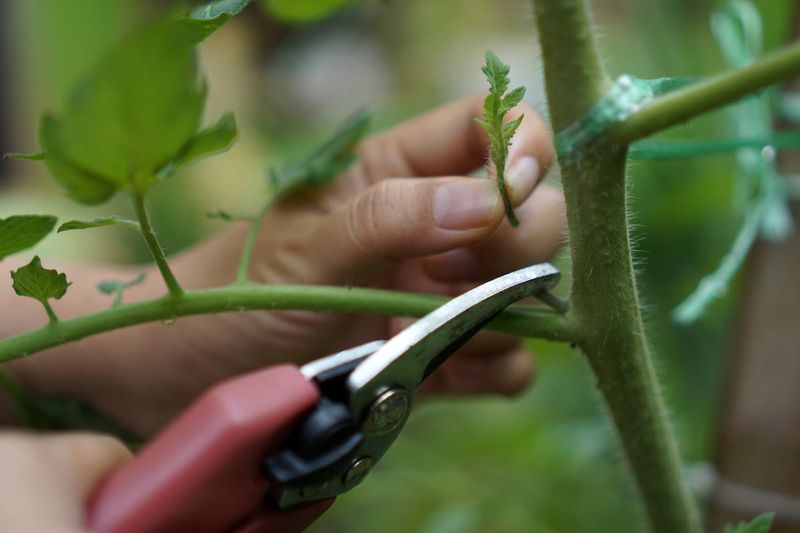Growing tomatoes can be incredibly rewarding, but it’s essential to avoid common mistakes that could hinder your harvest.
Here are seven crucial errors to steer clear of for a successful and bountiful tomato crop.
1. Planting Too Early
Tomatoes are highly sensitive to cold temperatures, and planting them too early can lead to stunted growth or even the death of seedlings. In colder climates, waiting until after the last frost is vital.
Ensure the soil temperature is consistently above 60°F (15°C) before planting. This helps the plants establish roots and grow strong. Consider using row covers or cloches if an unexpected cold snap occurs.
Keeping an eye on weather forecasts can save your plants from frost damage. Proper timing ensures healthy plants and a rich harvest.
2. Not Providing Proper Support
Without proper support, tomato plants can become tangled and lie on the ground, increasing the risk of disease and fruit rot. Staking, caging, or using trellises elevates the plants, allowing air to circulate and sunlight to penetrate the foliage.
This prevents moisture accumulation and reduces disease risk. When plants are supported, they can focus energy on producing fruit instead of sprawling. Choose sturdy stakes or cages that can withstand the weight of mature plants.
Regularly check the supports to ensure they’re secure as the plants grow heavier.
3. Planting in Poor Soil
Tomatoes thrive in nutrient-rich, well-draining soil. Planting in poor soil can result in weak plants with low yields. Before planting, amend the soil with compost, aged manure, or organic matter to enhance its structure and fertility.
Conduct a soil test to determine nutrient deficiencies that need addressing. A balanced soil pH between 6.0 and 7.0 is optimal for nutrient uptake. Regularly mulching the soil can also help retain moisture and regulate temperature.
Healthier soil leads to stronger plants and an abundant harvest.
4. Watering Incorrectly
Inconsistent watering practices, such as over-watering or under-watering, can cause issues like blossom end rot and fruit cracking. Tomato plants require deep, consistent watering to maintain moisture levels evenly throughout the growing season.
Water your plants early in the day to reduce evaporation and fungal diseases. Avoid wetting the leaves to minimize leaf diseases. Using a drip irrigation system can help deliver water directly to the roots.
Monitor soil moisture levels and adjust watering practices accordingly to ensure plants are neither too dry nor too saturated.
5. Ignoring Crop Rotation
Planting tomatoes in the same location each year can lead to soil-borne diseases and nutrient depletion. Rotating crops annually helps prevent these issues. Avoid planting tomatoes where related crops like peppers, potatoes, or eggplants grew previously.
Implementing a crop rotation plan disrupts the lifecycle of pests and diseases, promoting healthier plants. It also allows soil nutrients to replenish naturally.
Maintaining a garden journal can help track previous plantings and plan future rotations. This practice ensures sustainable gardening and more robust tomato yields.
6. Overcrowding Plants
Crowded tomato plants hinder air circulation, increasing the risk of diseases and reducing sunlight exposure. Space your plants at least 18-24 inches apart to allow for proper airflow and sun penetration.
This spacing helps prevent fungal diseases and allows for more robust growth. Adequate spacing also means that each plant has access to sufficient nutrients and resources. Pruning excess foliage can further enhance airflow.
Regularly assessing plant spacing and adjusting as they grow ensures healthier plants and a more productive harvest.
7. Neglecting Pruning and Maintenance
Neglecting to prune and maintain tomato plants can result in overgrown, tangled foliage that reduces sunlight exposure and air circulation. Regularly remove suckers, dead leaves, and excess foliage to promote healthier growth.
Pruning encourages plants to focus energy on fruit production rather than excessive leaf growth. It also helps prevent diseases by improving airflow and reducing humidity around the leaves.
Keep plants tidy and well-maintained to maximize yield and quality. Consistent maintenance tasks like pruning ensure vigorous plant health and a successful harvest.
